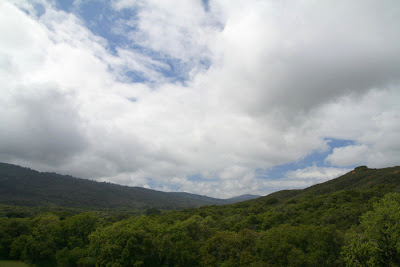[This is a work in progress, and probably will be a work in progress for a while. If you have specific questions about an item, leave a comment and I'll tell you what I can and/or update the page.]
I've decided to put up a list of everything hardware-related I've bought for photography, similar to what I tried back in this post. The hope is that this information will be useful to other financially-impaired photographers with similar equipment needs. Furthermore, it should really highly how many accessories are really needed for photography, back when I started, I had no idea how many little things I'd need as time went on. A major hidden cost, if you ask me...
For each item, I list where I got it (if I remember), the primary good and bad things about it, and the details of how it left my possession if I don't have it anymore. Because I like color, I've color coded the entries: blue is purchase/sale related, green is something good about the item, and red is something bad about the item. My general comments are in black.
I also include a wish list because, well, photographers always want more gear, even if they don't need it.
Current Inventory:
Canon Digital Rebel XT (350D) w/o Kit Lens
- 12/06 Purchased from B&H Photo, used, $400 + $10 S/H.
- Camera-wise, I'm really happy with it. A solid little camera, every feature you really need to get started, and very fast and responsive. You can't go wrong with its price-performance ratio. Is it better than a Nikon? Probably not, comparible, but not better. I have to admit I had some brand loyalty going in, which nudged me towards the Canon.
- My main gripe about the camera is that the grip is a little too small, especially if you have a large lens on it. Makes my right hand ache after a long session, but nothing horrible.
- The compact flash slot came damaged (some idiot tried to jam a CF card in backwards) but it seemed to work when I got it. Once B&H's 90 day warranty ran out, it started to get a bit flaky (a loose solder joint I expect, since I have no bent pins). But I've been putting off opening it up to repair it like I planned because it has been working pretty well. For now, removing the card and popping it back in usually does the trick.
- 6/07 Purchased from eBay (nyagent), refurbished, $606 + $34.95 S/H.
- I'll let you know my thoughts when I receive it.
- 3/07 Purchased from Cameta Camera, new USA version, $439+$12 S/H (-$10 rebate)
- My standard walk-around lens right now. Good optics and well-built. I have no complaints about it yet.
- Not quite as sharp as the Canon 70-200mm F/4L USM and the lens barrel has a little slop, but I'm pretty happy with it. I've never encountered an image where I felt it let me down.
- 5/07 Purchased from Amazon, new USA version, $487.38 total (free shipping, double $50 rebate)
- An amazing lens. Relatively light, super sharp (sharper wide open than the Tamron stopped down), minimal CA, fast focusing, great USM. Well worth the price.
- The F/2.8 would have been nicer, but costs a lot more. I do miss that added bit of light and background blurring though (but not the weight).
- 12/06 Purchased from Amazon.com, new USA version, $69.94+$0 S/H (super saver)
- I use it pretty much whenever I can: portraits, reversed for macros, copying papers, whenever I need 50mm.
- Super sharp, super light, super small, and super amazing optics (because they are so simple).
- Very cheaply made -- completely plastic with a lot of slop in the focus system. But if I break it, I'll just buy a new one!
- 4/07 Purchased used on eBay for $11.37 + $7 S/H.
- It has worked well as a dirt-cheap 1:1 macro lens (comparison to other cheap lenses).
- The controls are very handy and useful when reversed (especially the lever that makes it open up to full aperture).
- Seems to have some optical defects (I just can't seem to get perfect resolution). This could partially be my technique, and possibly the lack of coatings newer lenses have.
- No focus because it is reversed, cannot increase field of view that you could with a real macro lens.
- 12/06 Purchased at Amazon.com for $39.99 + $0 S/H (super saver).
- There was a sizeable rebate on it ($20?) but I may have forgotten to send it in (damn them!).
- It has always just worked. I thought this card might be the cause of my 350D's flakiness, but swapping it out, I realized this card was doing better than the others. Speed-wise, I notice no difference between this card and my slower ones.
- 2/07 Purchased at B&H for $0.01.
- A free book of assorted gels that are the perfect size for a flash... How could you go wrong? Get one every time you order!
- Currently out of stock.
- 3/07 Purchased at Eforcity (Amazon.com storefront) for $5.94 + $4.99 S/H
- Everybody needs a second battery. This one works ok: doesn't last as long as the Canon NB-2LH and the 350D battery indicator drops to 2/3 after a few pictures, but then stays there a long time. Good backup for the price.
- 3/07 Purchased at BlueProton (Amazon.com storefront) for $4.58 ($2.29 ea) + $11.70 S/H
- And everybody needs backup compact flash. May be slightly slower than SanDisk Ultra II, but I've never really noticed. These cards do seem to be flakier in terms of the 350D CF slot problem I have.
- 6/07 Purchased at MPEX for $30.95 * 2 + $6.50 S/H - $15 * 2 rebates = $38.40
- Reasoning for the purchase here.
- 2/07 Purchased new from B&H for $79.99 + $2.95 S/H.
- This is my main flash, the one I usually use when I need only one flash. Most of the time I use it on manual.
- Good power, tilt & swivel on head is very nice. I don't miss the zoom that much.
- Recycle time is slower than the SB-20.
- Back controls can be hard to operate sometimes.
- Auto mode seems to overexpose by a stop or two.
- 2/07 Purchased used on eBay for $0.99 + $10 S/H. He said it didn't work when he put batteries in.
- The problem was just a little corrosion on the battery contacts -- a little sandpaper and it worked fine.
- Great flash, not as powerful as the Sunpak 383, but I like the controls a lot better and it recycles faster. Durable too, I dropped it on concrete and other than a little rattle, it works great still!
- Good off-camera flash for a cheap price on eBay.
- Funky tilt-zoom doesn't make gels very easy.
- 2/07 Purchased on eBay for $12.06 (including S/H)
- Works well indoors at close range. Reliable and pretty solid. Dirt cheap.
- Had trouble getting it to sync outdoors or if the other flash is in an umbrella.
- 2/07 Purchased new from B&H for $9.99 + $2.95 S/H
- Hasn't gotten much use, especially since the wireless triggers go right on the hotshoe. Probably wasn't worth purchasing.
- The PC connection has an off-center center and doesn't always connect to the Sunpak 383 signal well.
(tons more to post soon)
Previous Inventory:
Tamron AF 19-35mm f/3.5-4.5 [my review]
- 12/06 Purchased on eBay, used, for $90 + $15 S/H
- A nice inexpensive wide angle lens for the 350D (or super-wide if you have a film camera. Has some flaws (small zoom range, slow optically, soft wide open, poor red sensativity) but good for the price.
- 4/07 Sold on eBay, for $81.51 + $13 S/H (to a nice guy in Canada)
- 12/06 Purchased on eBay (w/ 67mm UV filter), used, for $81 + $9 S/H.
- 6/07 Sold on eBay (w/ filter), for $106.48 + $28 S/H (to Italy)
- Great price for probably the best cheap telephoto out there. Covers a wide zoom range, includes 1:2 macro mode (using switch) at long end, pretty well-built. An excellent way to cover the telephoto range on a tight budget and highly recommended if you need a $100 telephoto.
- Soft wide open or near 300mm, slow lens (making indoor shots nearly impossible without a tripod), and lots of chromatic abberation at the long end (nearly impossible to remove in software). Those flaws have left me wanting to upgrade. But what I've learned from this lens is well worth it.
Wish List:
Canon EF 100mm F/2.8 USM Macro
- I'd like a mid-range macro, also considering Tamron 90mm F/2.8 or Sigma 105mm F/2.8
- Be nice to have, but not super necessary.




























